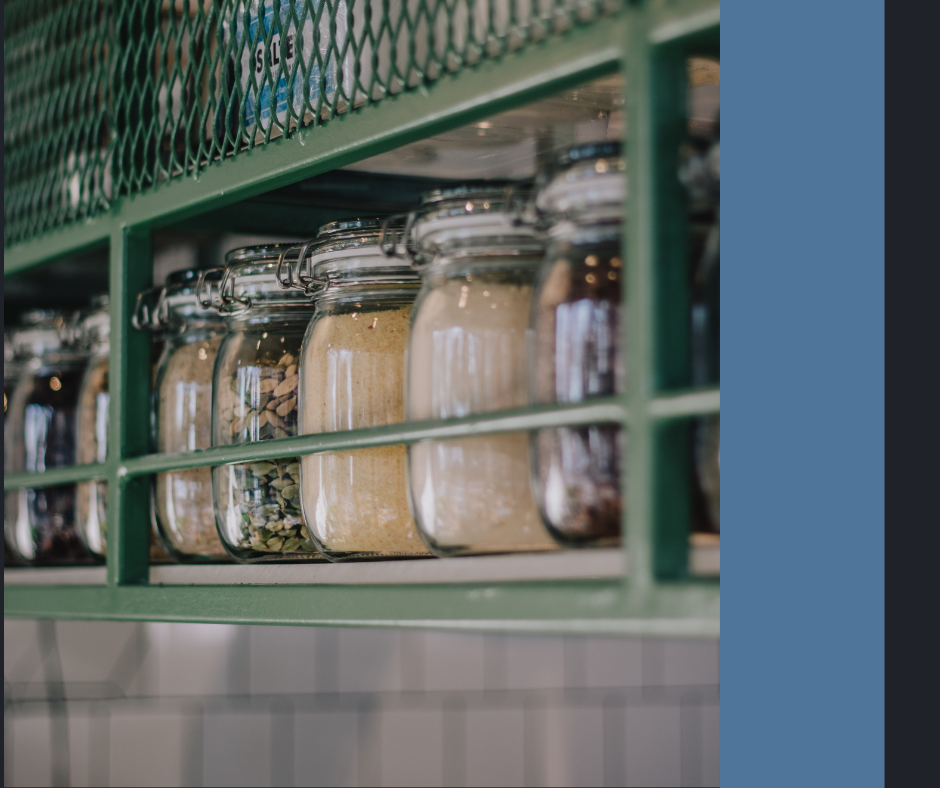
How to Protect Your Food Storage
Share
When you’ve worked hard to build up a food supply, the last thing you want is to lose it to something preventable. Earthquakes, rodents, insects, or even just poor storage conditions can quickly destroy months—or years—of preparation. Protecting your food storage is just as important as building it. Here are some practical, realistic steps you can take to make sure your investment stays safe and usable when you need it most.
1. Secure Your Shelving
If you live in an earthquake-prone area (like Utah and much of the western U.S.), unsecured shelves can turn into a disaster. Imagine rows of carefully filled glass canning jars crashing to the floor and shattering. To prevent this:
- Install straps across your shelves. A simple bungee cord, ratchet strap, or even wooden dowel mounted across the front of shelves will keep jars from tumbling forward.
- Anchor your shelving units. Attach them to the wall studs so they won’t tip over during shaking.
- Use heavy-duty shelving. Thin plastic shelves can sag or collapse under the weight of cans, jars, and buckets. Go with sturdy metal or reinforced wood.
2. Keep Rodents Out
Mice and rats can destroy food storage in days, chewing through packaging and contaminating supplies. Even if you don’t see them, they may already be there. Some preventive steps:
- Use sealed containers. Store grains, rice, flour, and pasta in food-grade buckets or sealed bins. Rodents can chew through cardboard and thin plastic.
- Elevate your storage. Keep food off the floor and a few inches away from walls to make it harder for rodents to access.
- Set traps. Even if you don’t currently have a problem, keeping a few traps set (and checked regularly) is an easy safeguard.
- Seal entry points. Walk your pantry, basement, or garage and look for gaps around pipes, vents, and doors where rodents can squeeze through. Use steel wool or hardware cloth to close those gaps.
3. Control Temperature and Moisture
Food lasts longer when stored in the right environment. Heat and humidity are your biggest enemies.
- Aim for cool and dry. Ideally, food should be stored between 50–70°F. Avoid garages or sheds that get hot in summer.
- Use desiccant packs. For long-term storage of grains, beans, or dehydrated food, oxygen absorbers and silica gel packs can reduce moisture and extend shelf life.
- Avoid direct sunlight. Store food in dark areas or opaque containers to reduce temperature swings and prevent packaging from breaking down.
4. Protect Against Insects
Weevils, moths, and other pests love grains and flour. They can sneak into packaging or even hatch from microscopic eggs already present in food.
- Freeze dry goods before storage. Placing flour, rice, or grains in the freezer for 3–5 days before transferring to buckets or jars kills insect eggs.
- Use oxygen absorbers. Many insects can’t survive in an oxygen-free environment. Adding them to sealed containers helps prevent infestations.
- Rotate and inspect. Check your storage every few months. Look for webbing, holes in packaging, or clumps in flour that may indicate pests.
5. Rotate and Label
Protecting your food storage also means keeping it fresh and avoiding waste.
- First in, first out. Use the oldest food first and place new purchases at the back.
- Label everything. Write the date on buckets, jars, and cans so you know when they were stored.
- Do quick checks. Once or twice a year, take inventory. Replace anything that’s bulging, leaking, or looks suspicious.
Final Thoughts
Building food storage is an investment in your family’s security, but it’s only as strong as the protections you put in place. By securing your shelves, keeping rodents and insects at bay, storing food in a cool and dry space, and rotating regularly, you’ll make sure your food is there for you when you need it most.
Preparedness isn’t just about having supplies—it’s about protecting them. With a few simple safeguards, your food storage can last for years and give you peace of mind.
No fuss. No fluff. No fear.
Other Articles of Interest
How Much Food and Water Do You Need For a Year?
How to Use Long-Term Food Storage (25 recipes included)
Security and Self-Defense: Building Confidence in Uncertain Times
